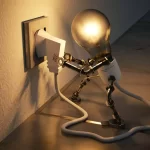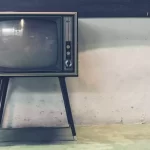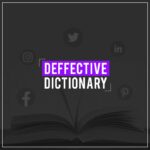- Shreshtha Agrawal
Celebrating World Art Day & National Anime Day
Let’s start with a confession—every time we come across an anime-inspired digital illustration on our feed or see a Studio Ghibli-style AI-generated visual go viral, we feel something. A pull. A sense of nostalgia, excitement, and a little existential awe. And this April 15th, when both World Art Day and National Anime Day collide on the calendar, we knew this wasn’t just coincidence—it was a cosmic nudge to talk about how art, anime, and AI are no longer living in separate universes.
They’re fusing, blurring, and co-creating a world where creativity is at its chaotic, beautiful peak.
From Storyboards to Storyworlds!
Anime is no longer just a genre. It’s a mood, a marketing strategy, a lifestyle. From streetwear to skincare ads, anime aesthetics have made their way into nearly every creative corner. Remember when Demon Slayer outsold Avengers: Endgame in Japan? Or when Netflix revealed that a massive chunk of their global subscribers watch anime—over 100 million of them? This isn’t niche anymore; it’s mainstream. It’s massive. And it’s emotional.
Because anime, at its core, is not just about big-eyed characters and gravity-defying action. It’s about painstakingly detailed background art, expressive storytelling, and human truths wrapped in fantasy. But here’s the kicker—this beauty comes at a cost. Studios like MAPPA and Studio Ghibli, revered worldwide, are under scrutiny for overworking artists. There are real people behind these frames—scripting, sketching, redrawing, reanimating for hours, days, months—often for very little pay.
For consumers, anime is comfort food. For artists, it’s often an exhausting act of love.
Art Today: Canvas, Code, and Collabs
In 2025, art isn’t just on a wall. It’s in Instagram carousels, on Behance portfolios, in metaverse museums, and even on NFTs (yes, still). It’s fashion editorials, campaign storyboards, digital collages, fan edits, AI morphs, and so much more.
And in all of this, designers are no longer just illustrators—they’re visual engineers, brand therapists, motion scientists. They’re mixing Photoshop with Procreate, Blender with After Effects, Midjourney with Cinema 4D. The modern artist wears too many hats—and somehow makes it work.
But here’s where things start to get wild: AI is no longer just the assistant. It’s starting to paint, animate, write scripts, and yes—mimic Ghibli’s watercolor skies with eerie precision.
A Middle Ground or a Middle Finger?
Here’s the million-dollar debate—is AI killing creativity or supercharging it?
On one hand, tools like Runway ML, Midjourney, DALL·E, and ChatGPT are empowering indie creators, content strategists, and even marketers to go from idea to execution at warp speed. Want to visualize a manga-style concept art for a pitch? AI can give you 10 versions in a minute.
But on the flip side, artists are pushing back—rightfully so. AI models are often trained on existing artworks scraped without consent. The style you spent 10 years perfecting? Someone can now replicate a version of it in 30 seconds with the right prompt.
When Studio Ghibli’s Hayao Miyazaki called AI art “an insult to life itself,” it wasn’t just a hot take. It was a reminder that soul cannot be coded. But we’re also seeing creators explore a middle ground. Designers are now using AI for moodboarding, reference styling, and even scripting workflows—not to replace human imagination, but to accelerate it.
This isn’t about picking a side. It’s about learning the dance.
Where Fans Become Artists, and Artists Become Coders
Here’s the thing—today’s anime fan is also a creator. They make fan reels, they paint characters in their style, they use TikTok filters to turn themselves into Ghibli protagonists. The audience is no longer passive.
We’re in an era of remix culture, where AI tools and anime inspiration fuel entire content ecosystems. Brands are catching on too—animated explainer videos, Ghibli-style ad films, AR anime face filters—it’s all marketing, but it doesn’t feel like it when done right.
Even agencies (hi, it’s us!) are leveraging this fusion. We’ve storyboarded campaigns inspired by Jujutsu Kaisen color palettes. We’ve brainstormed concepts with AI to simulate mood boards in anime tones. And we’ve worked with artists who create content that straddles both passion and pixels.
Because that’s where the magic lives now—in the in-between.
So, What Does Crewtangle Think?
We believe this is creativity’s most exciting chapter yet. Not just because there are more tools. But because the lines between creator and consumer, human and machine, 2D and 3D—are gloriously dissolving.
Art, anime, and AI aren’t separate silos. They are co-authors of this era’s visual culture. One doesn’t replace the other—they challenge, influence, and elevate each other.
This April 15th, as we raise our styluses, sketchbooks, and script tabs—we’re not just celebrating what art has been. We’re embracing what it’s becoming.
And at Crewtangle, we’re here for all of it.
-
Content that rocks the world
06 November, 2020 -
Design: Bringing Ideas to Life
12 November, 2020 -
Whassup Bud: One of Budweisers’ Evergreen Television Ad Campaign
20 November, 2020 -
Brands must be Gods
27 November, 2020 -
The Deffective Dictionary
08 January, 2021






